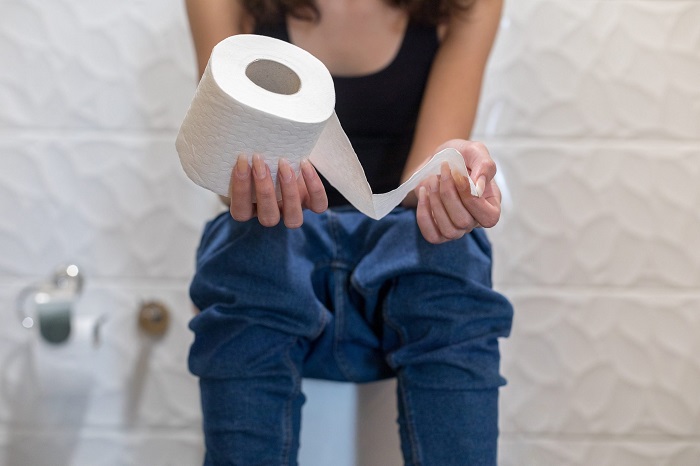The hemorrhoids, commonly known as piles, are dilations of the rectal or anal part veins manifested in the form of bumps that usually cause pain, itching, burning, and bleeding. Its causes vary from constipation to pregnancy or other pathologies that contribute to its appearance. They can be treated favorably by simple measures or drugs designed to reduce discomfort. It will be necessary to consult with the doctor in other severe cases since a surgical intervention could be required. Keep reading because FastlyHealwe gives all the details about hemorrhoids’ types, symptoms, and treatments.
Table of Contents
Types of hemorrhoids
The hemorrhoids appear when increased pressure occurs of the anus, which may be due to multiple causes. Among the common factors that lead to the development of piles is constipation, exerting great effort during bowel movements, standing or sitting in an inappropriate position for a long time, being overweight, or suffering from certain diseases such as liver cirrhosis. In addition, it has also been noted that people with a family history of hemorrhoids are at higher risk of suffering from them; and that they are a widespread condition in pregnant women, especially in the last weeks of gestation due to the pressure exerted by the uterus on the hemorrhoidal veins or the great effort made during childbirth.
Two types of hemorrhoids are distinguished according to the point of location in the anus; thus, we can speak of internal and external hemorrhoids.
- External hemorrhoids: they are located in the superficial hemorrhoidal plexus, that is, below the junction of the anus with the rectum, remaining, say, in the “visible” part. This type of hemorrhoid does not usually cause bleeding because it is covered with skin, preventing it. However, if they are thrombosed and a blood clot forms due to the great effort of excretion, the patient may feel a lilac-blue lump in the anal region, which is very painful and causes bleeding.
- Internal hemorrhoids are located in the inner hemorrhoidal plexus, that is, in the lower part of the rectum and above the anus. They are covered by mucosa, not by skin like the external ones, and bleeding is their primary manifestation.

Symptoms of hemorrhoids
In very mild cases, hemorrhoids can be asymptomatic, but their symptoms will depend on the degree of inflammation. Usually, in patients with piles, the following are observed:
- Brutal and tender lumps near the anal area.
- Prolapse: lump that appears if hemorrhoids come out from inside the anus to the outside, making it very difficult to reinsert them. Causes severe pain.
- It was bleeding: blood that comes from the rectum and usually occurs during exertional defecation.
- Anal pain and itching, especially when having a bowel movement or sitting.
- Secretion: mucus from the anal mucosa secreted in case of internal hemorrhoids and causes irritation, itching, and a burning sensation on the skin.
It will be imperative to see your doctor immediately if heavy bleeding and other symptoms such as dizziness, vertigo, or fainting are experienced simultaneously.

Treatment of hemorrhoids
The treatment of hemorrhoids should be determined based on the severity of the symptoms. Still, in most cases, it is a condition that can be cured by adopting simple daily measures and a series of healthy lifestyle habits. This will reduce discomfort and speed up the healing process of piles.
First of all, constipation must be fought, as it is one of the main responsible for the appearance of these lesions. For this, it is essential:
- Follow a balanced diet rich in fiber, increasing the consumption of vegetables and fruit.
- Avoid consuming foods that produce gases and fatty foods.
- Drink plenty of water throughout the day.
- Practice physical exercise.
- Set a stable meal time and don’t delay going to the bathroom.
- Make use of stool softeners to facilitate evacuation.
Regarding pharmacological treatment, corticosteroid creams and ointments may be helpful to reduce both the discomfort and inflammation caused by piles; analgesics, also to relieve pain; laxatives, in case of constipation that does not improve with changes in diet; or venotonics, which are suitable for patients of hemorrhoids with active bleeding or acute hemorrhoidal thrombosis.
When suffering from piles, personal hygiene plays a significant role in healing. It is advisable to avoid using toilet paper whenever possible, especially that scented or fragranced. It is preferable to use wet wipes or do a sitz bath with warm or cold water and dry the area with a soft towel without rubbing. If you do sitz baths for about 10 to 15 minutes, you can reduce discomfort considerably. Likewise, the affected area should not be scratched or touched to avoid aggravation, and it is recommended to use cotton underwear.
If these measures do not work and the hemorrhoids do not respond to the treatments and, on the contrary, become worse, it will be advisable to consult with the doctor as other procedures may be necessary. An in-office treatment called infrared coagulation may be needed, which involves the application of heat to reduce the size of the lump. On the other hand, elastic bands can also be placed at the base of the piles to strangle it until it falls on its own after a few days.
If the latter is not enough, the doctor will consider the option of some surgery. Usually, hemorrhoidectomy is carried out, which removes hemorrhoids and is regarded as the most efficient technique for those internal hemorrhoids that have not responded to any of the other treatments.
This article is merely informative. At FastlyHeal .com, we do not have the power to prescribe medical treatments or make any diagnosis. We invite you to see a doctor in the case of presenting any condition or discomfort.
If you want to read more articles similar to Hemorrhoids: types, symptoms, and treatments, we recommend entering our Digestive System category.

I am a Surgeon with a diploma in comprehensive ultrasound and surgical care residency, an area I am specializing in. During the exercise of my profession, I have realized the need for patients to know the diseases they suffer, and I can tell you that a large part of their complications is due to a lack of information. Being a health web writer allows me to transmit my experience, without borders, to all those readers eager for knowledge, educate them in the prevention of diseases and promote a healthy lifestyle.

